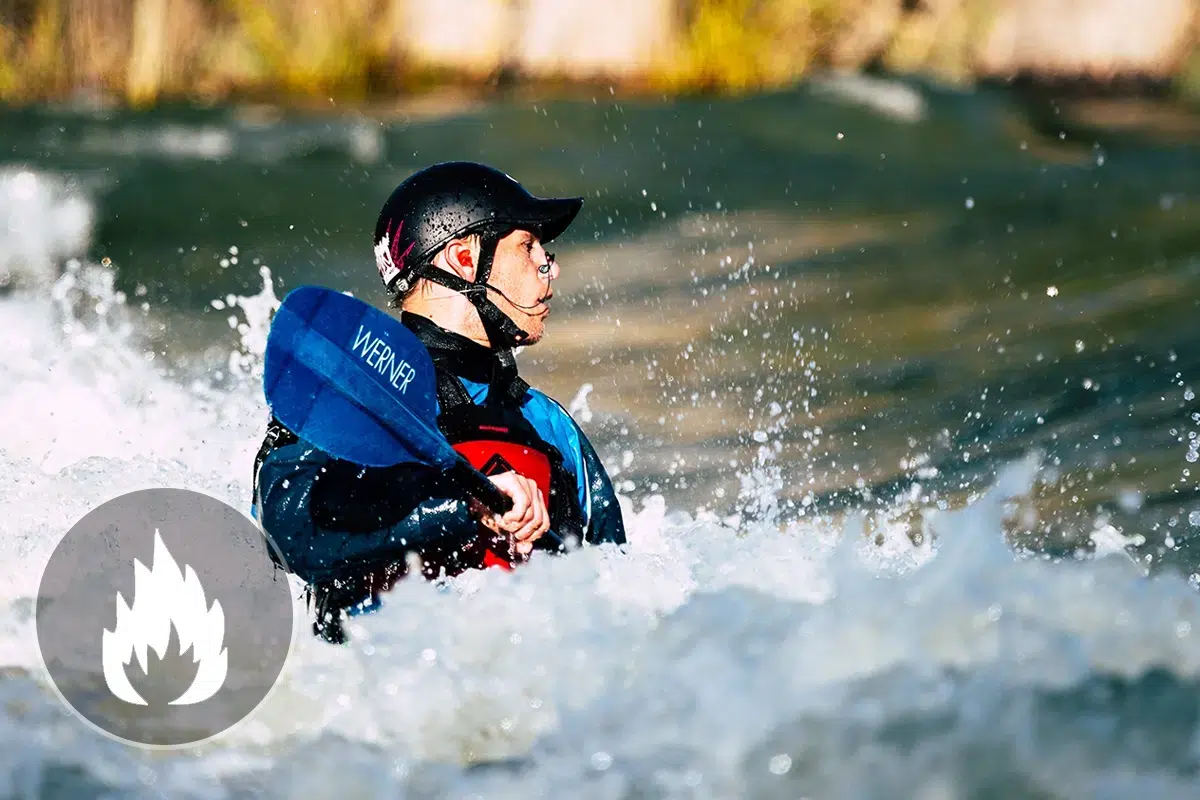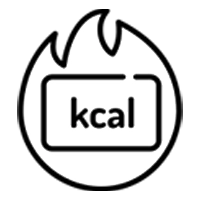Show summary Hide summary
How many calories do we burn kayaking?

Everything you need to know about kayaking
Want to know how many calories you burn kayaking for 30 minutes or 1 hour? Just enter your profile to calculate your energy expenditure. Our calculator will show your estimated calorie burn based on your session.
Kayaking: A few examples of energy expenditure depending on weight and activity time.
Use the table below to see how many calories you can burn kayaking!
Intense whitewater
kayaking
Expenditure in Kilocalories
| Weight | 15 minutes | 30 minutes | 1 hour |
|---|---|---|---|
| 40 kg | 89 | 179 | 357 |
| 50 kg | 112 | 223 | 446 |
| 60 kg | 134 | 268 | 536 |
| 70 kg | 156 | 312 | 625 |
| 80 kg | 179 | 357 | 714 |
| 90 kg | 201 | 402 | 803 |
Flatwater kayaking
recreational
Expenditure in Kilocalories
| Weight | 15 minutes | 30 minutes | 1 hour |
|---|---|---|---|
| 40 kg | 53 | 105 | 210 |
| 50 kg | 66 | 131 | 263 |
| 60 kg | 79 | 158 | 315 |
| 70 kg | 92 | 184 | 368 |
| 80 kg | 105 | 210 | 420 |
| 90 kg | 118 | 236 | 473 |
See detailed calculations and metabolic equivalent for kayaking
Everything you need to know about kayaking
FIND OUT MORE ABOUT KAYAKING
Kayaking is a water sport that can be practiced as a leisure activity or in competition. It can be practised at sea or on a river, and the equipment used will differ according to whether it is practised on the sea or on a whitewater river.
The first kayaks were built by the Inuit to meet a practical need for travel for fishing and hunting.
Today, kayaking is a widely recognized and appreciated sport. You can practice disciplines such as slalom and downhill.
Whether on rivers, lakes or the sea, kayaking offers a tranquil boating experience and the chance to explore magnificent aquatic landscapes.
Some benefits of kayaking:
- Muscle strengthening: Paddling engages many of the body’s muscles, especially upper body muscles such as shoulders, arms, back and abdominal muscles. This effectively strengthens and tones the upper body.
- Improved endurance: Kayaking is an aerobic activity that improves cardiorespiratory endurance. Regular paddling increases heart rate, promotes blood circulation and improves lung capacity.
- Balance and coordination: Kayaking requires good balance and coordination between arm movements and maintaining the boat’s stability. Regular kayaking practice can improve these skills and contribute to better body coordination.
- Stimulating concentration: Paddling in the wilderness requires concentration and attention to navigate and adapt to different water conditions. This can promote mental concentration and help disconnect from everyday stress.
- Relaxation and well-being: Kayaking offers a tranquil and soothing boating experience, allowing you to connect with nature and enjoy a moment of relaxation. Being surrounded by waterscapes and the beauty of nature can have a soothing effect on the body and mind.
- Interaction with the environment: Kayaking lets you explore places that are difficult to access by other means. You can discover secluded coves, observe aquatic wildlife and enjoy the beauty of marine and river ecosystems.
In conclusion, kayaking is a complete water activity that offers benefits for both body and mind. Whether you’re looking to work out, relax in the great outdoors or explore new horizons, kayaking is an excellent way to connect with the water and enjoy its many benefits.
How to calculate the number of calories burned kayaking
The result displayed is expressed in Kcal and is calculated from the MET (Metabolic Equivalent of Task). The MET for each activity is the result of statistical data and cannot therefore be interpreted as an exact calculation, but rather as an estimate taking into account the MET value and the ratio between the time spent on an activity and the weight of the individual.
For example: the MET value for kayaking in calm water is 5, and 8 for white water. This means that a person kayaking in whitewater consumes 8 times more energy than when resting.
MET values for different levels of kayaking intensity
- calm water kayaking: MET = 5
- whitewater kayaking: MET = 8
Discover the detailed formula to calculate your daily energy expenditure while kayaking
Consumption in Kcal per minute = (MET*3.5*Weight in kilos)/200
This gives for a 70-kilo person kayaking in a torrent for 30 minutes:
Consumption in Kcal per minute = (8*3.5*70)/200 = 9.8 Kcal/mn
So for 30 minutes = 9.8*30 = 294 kcal for 30 minutes
All sports in detail!



















































